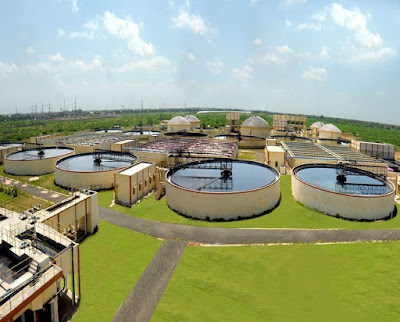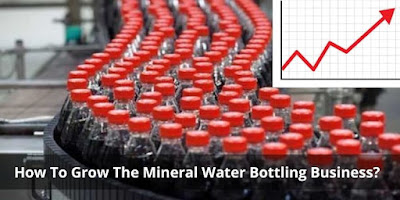A Complete Guide to Water Treatment Plant
A Complete Guide to Water Treatment Plant
This article explains to you everything about water treatment plants, including what is a water treatment plant and its role. And also, what type of measures should be taken care of while cleaning the water. So without a further do, let's start.
 |
| A Complete Guide to Water Treatment Plant |
A water treatment plant is a structure that cleans and disinfects waste and contaminated water before making it drinkable. Filtration, sedimentation, disinfection, and chlorination are some of the processes used by various water treatment plants to purify polluted water. A few examples of common water purification equipment used in such plants include screening equipment, oil-water separators, water filters, sludge treatment equipment, ozone generators, and other famous water purification equipment.
What is the role of a water treatment plant?
The main aim of wastewater treatment is to remove as many dissolved solids as possible before releasing the remaining water, referred to as effluent, into the environment. The decomposition of solid matter removes oxygen from the water, which is needed by plants and animals.
Water Treatment Plant India Technologies has a track record of delivering advanced and well-installed water treatment plants for a wide range of industries. In a water treatment facility, several protocols and procedures are practiced. About the fact that there is no one-size-fits-all method or collection of protocols, a variation of the given methods is commonly used to have a standard solution. The following are the measures to take:
- Sedimentation is a technique for separating rigid elements that are stored and trapped as floccules.
- Aeration: This method is used to remove dissolved minerals, including manganese and iron, from the water.
- Pre-chlorination: This procedure is used to limit and monitor the development of algae.
- Disinfection: As the name implies, this procedure is used to destroy bacteria and viruses.
- Desalination is the mechanism of removing the liquid salt from water.
- Filtration: Another method of removing foreign contaminants trapped in the air is filtration.
- Coagulation: This is the mechanism that allows for flocculation, which is a chemical technique that causes suspended colloids to shape flakes. Coagulant supports, such as polyelectrolyte, are used to make the coagulation mechanism go more smoothly. Coagulants are applied to the water to make the sedimentation phase easier. The remaining impurities are removed from the water in a sedimentation tank with sand filters to eliminate dissolved solids. After that, the sand is collected and washed to reuse.
Water treatment is a procedure that is used to render water suitable for the intended purpose. It is commonly used for a variety of purposes, including drinking, washing, medical, commercial, and manufacturing. This procedure's primary purpose is to eliminate toxins from water. The existence of these chemicals can reduce water safety, rendering it unsafe to consume and use for commercial purposes. Water Treatment Plant India is a market pioneer in providing water treatment plants to meet the needs of a wide range of industries. Due to strict contamination and water quality standards for agriculture, it is important to filter water from a variety of sources until it can be used for other purposes.
Also read: How to set up a mineral water plant?
Final Verdict
With the rise of population and industry, the need and use of water treatment plants have increased. Even though our world is covered by 70 percent water, only one percent of it can be used for consumption. It's important to save this natural resource from being depleted.
Do you know How Water Treatment Plant Work? This guide can help you more about water treatment plants and their working model.
I hope this article on What is the role of a water treatment plant seems to be useful for you.


Comments
Post a Comment